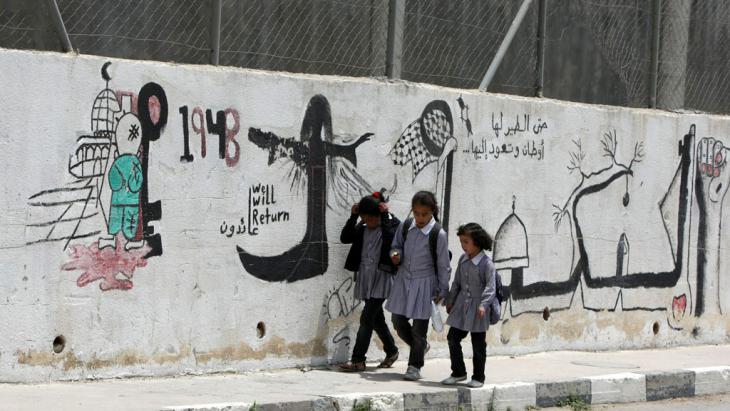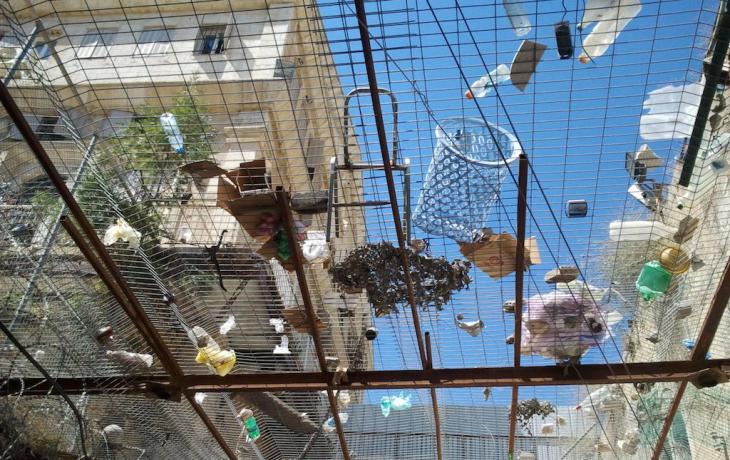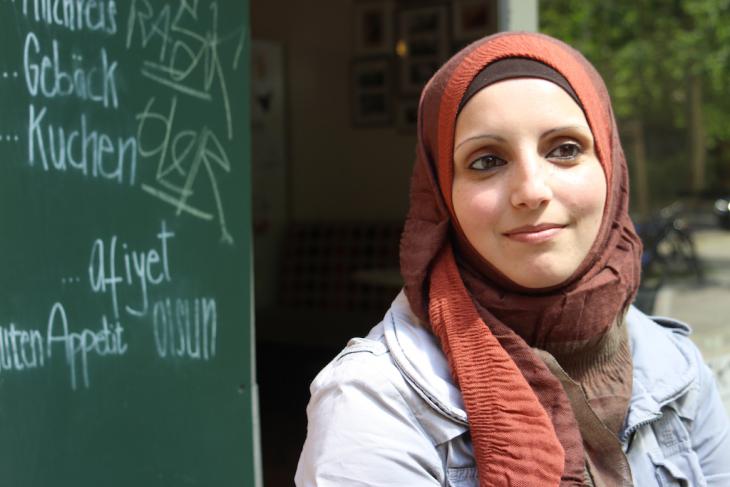"Palestine is like a prison"

The thick nets and grilles spanning the old Al Shallalah Street in Hebron, one of the main thoroughfares of the largest city in the West Bank, have become a repository for rotting food, household objects both large and small, as well as bricks and all kinds of other items.
This refuse is the material manifestation of a conflict that has divided the city of Hebron for half a century – Palestinians and Israelis, Muslims and Jews, Arabs and Zionists, indigenous people and new settlers. At the heart is the question: who was there first, and who is therefore laying claim to which territories?
The nets and grilles are the only barriers protecting Arab pedestrians from the things thrown at them by nationalist religious radical settlers. Around 800 of them have occupied houses and entire districts in the Arab old town, their presence impacting on the lives of 160,000 Palestinians. Some have simply built their homes on the rooftops of Arab-owned houses.
This means that architecturally, Hebron is not only traversed by vertical, but also by horizontal borders and divided into zones above and below. These lines define the realities of life for the population – regardless of whether Israel is currently engaged in a war or not.
Heba Tebakhi grew up and went to school "below". The young woman comes from a middle-class Palestinian family: her father is a tradesman specialising in the import of construction equipment; her mother is a housewife. For Heba – and for many others of her generation – living in a divided city has been a fact of life since early childhood. But the situation for the Arab residents of Hebron took a dramatic nosedive in the year 2000 with the start of the second intifada.

Checkpoints on the way to school
Checkpoints were set up, placing tight restrictions on the Palestinians' freedom of movement in the city, restrictions that remain in place to this day. Curfews are frequently imposed. Israeli soldiers have also been positioned on rooftops to protect some 85 Jewish families living in the historical city centre.
Moreover, Arabs are now no longer even able to access certain districts including the main street, Al-Shuhada, which used to host a vibrant market. Only a few Palestinian children whose school is located here are allowed to pass through the checkpoint after undergoing thorough checks. The soldiers receive the students with a stern expression and machine guns at the ready. Otherwise, the street is the deserted territory of the few militant Israeli settlers.
But it is not just in the historical centre of Hebron that the everyday lives of the people are defined by boundaries and checkpoints; these are also a feature of peripheral areas. "First and foremost during the second intifada there were many boundaries in the West Bank. If you didn't get through one checkpoint, you'd go to the next one," is Heba's laconic summary of what she had to tolerate for many years in order to visit her family. That was during her time as a student in Bethlehem, four years after the beginning of the second intifada.
Although Bethlehem is just under half an hour's drive from her hometown, the young woman had to move to Bethlehem. This is because there are currently three permanent checkpoints, not to mention all the mobile checkpoints, on the 30-kilometre stretch of road between Hebron and Bethlehem.

The boundaries in the mind can never be dismantled
For this reason, Heba was never sure whether she would need the usual three hours to get home, whether her journey would last much longer, or whether she would even arrive at all. This is because each time the security level was increased, the borders were closed at short notice. For four years, she endured the countless humiliating border controls almost every weekend: showing her passport, allowing herself to be frisked, the censorious looks and insulting words.
To this day, Heba still frequently has nightmares about this procedure at the borders and checkpoints: waiting at barriers, the soldiers' chicaneries, the fear and insecurity that were a perpetual feature of every route and journey. Like many members of her generation, Heba decided to leave her homeland after completing her studies. Although she's been living in Berlin for five years, she will never be free of the boundaries in her mind.
Happy childhood memories of family excursions and suchlike are involuntarily invaded by images of armed soldiers taking her father away and not releasing him for hours. Each and every sensation of nostalgic security is always bound up with a sense of fear and trepidation.
"Palestine is like a prison," says Heba. "I became particularly aware of this in Berlin. It's much further from Rudow to Spandau than from Jerusalem to Ramallah. Despite that, you only need 40 minutes and not several hours. Forty minutes without a checkpoint ‒ to me, that's freedom."
Susanne Kaiser
© Qantara.de 2014
Translated from the German by Nina Coon